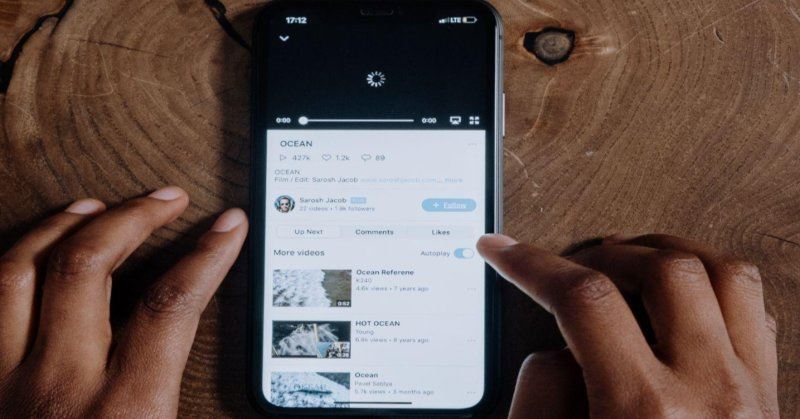Some people wonder if all pre-roll video is ultimately the same.
Spoiler alert… the answer is no.
Video is a strategy we can leverage in digital advertising, generally to fulfill awareness or consideration campaign parameters. But, not all video you see on the internet is considered equal when it comes to building a media plan. Let’s break it down!
What is a Pre-Roll ad?
Generally speaking, a pre-roll ad is a video unit that plays before a consumer intends to watch a piece of video content on the internet.
This is actually where the similarity between different online video tactics end.
You can also technically run mid-roll or post-roll ads on the internet, but for the context of this blog, we’ll focus on pre-roll only.
What types of Pre-Roll ads exist?
There are two types of pre-roll video we plan at Arm Candy:
Online Video (OLV) or programmatic video, is a pre-roll ad delivered across a website, and can be delivered to any desktop or mobile website with programmatic inventory.
YouTube, while still technically an ‘online video,’ is treated separately from the greater internet. This video delivers on the YouTube platform only, and has distinctly different characteristics from Online Video.
First, let’s talk about YouTube.
YouTube has two types of video: Bumpers (:06s ads) and TrueView (:15s and :30s ads).
Many of us think of YouTube in a desktop or mobile scenario. But, in the past year, our YouTube campaigns delivered impressions across the following devices:
- 39% CTV
- 42% Smart Phones
- 11% Tablet
- 7% Desktop
YouTube actually delivers almost as many impressions to Connected TVs as it does Smart Phones, so YouTube is not a comparable viewing experience to general pre-roll on the web.
Rates tend to fluctuate greatly depending on length. For example, bumper ads are much cheaper than TrueView. The good news is that all video on YouTube is inherently 100% viewable due to the nature of the platform, so every impression you pay for gets seen by a consumer.
YouTube also has some limitations. There are no third-party audiences available via YouTube. It is limited only to interest and behavioral Google data which is great for broad targeting, but not for anything granular.
YouTube also falls down when it comes to tracking. YouTube’s platform sets up campaign tracking in an aggregated manner—meaning that it groups all floodlights (campaign conversions) into one goal to optimize towards. That means there isn’t a way to distinguish optimizing towards a landing page view or a purchase. The only way to have YouTube optimize towards a singular conversion (ie. Purchases) is to have only one floodlight set up for optimization across the entire campaign, which is not ideal. For this reason, YouTube’s strength is for awareness campaigns, and are not likely to be implemented for any kind of conversion campaign—even at low budgets.
How is Online Video different?
Online Video has some benefits as compared to YouTube, and that is largely in targeting capabilities. OLV run through any provider can leverage third party audience segmentation, opening OLV up as a possibility for granular targeting for any brand and effective for niche audiences.
OLV often times sees better rates. Generally, OLV CPMs come in 30% cheaper than YouTube TrueView, which has comparable lengths. OLV can only run :15s and :30s spots—YouTube can run :06s which are oftentimes cheaper. That said, you won’t find CTV ads sneaking into your OLV buy like you might find on YouTube.
Bigger differentiators between OLV and YouTube are seen in optimization and attribution. Online Video can be optimized towards any conversion that is set up on a website, which is the biggest limitation for YouTube. While OLV may not often be set up for true conversions, there can be use cases to test optimizations to landing page views—or even purchases for retargeting audiences run against OLV. These options are not possible for YouTube.
How would we approach Online Video vs YouTube?
We believe Online Video is a great way to amplify a brand’s digital video presence in the market by using quality ad placements that deliver extremely efficient cost-per-views (CPV) in the $0.02-$0.03 range. Online Video can also in some instances elicit decent CTRs for campaigns. Though site traffic is not the primary KPI for optimization, it can be a nice bonus to drive incremental site traffic.
YouTube on the other hand, is more often than not a secondary video play. It can be helpful in diversifying the campaign reach. With today’s segmented media consumption, it’s another engaging platform to message specific audiences on with its unique targeting capabilities. It can be considered more of a premium video placement, and best leveraged for brand awareness with the limitations seen in tracking capabilities.
The Breakdown
Both YouTube and Online Video have their time and place in a media strategy, just like any other channels. Below is a summary of aspects for each to get a better understanding of how you might want to leverage video placements in your next campaign.
| YouTube | Online Video | |
| Ad Lengths | :06s, :15s, :30s | :15s, :30s |
| Devices | CTV, mobile, tablet, desktop | mobile, tablet, desktop |
| Targeting | Limited, Behavioral and Interest data from Google First Party Data | Third Party Audiences First Party Data |
| CPCV | $0.02–$0.10 | $0.01–$0.03 |
| Viewability | 100% | Varies, benchmark around 70% |
| Tracking/Attribution | Limited, cannot optimize towards one singular campaign conversion | Tracking/Attribution |
Want to dig further into the details on this one? Send us a note—we’d love to chat video with you!


